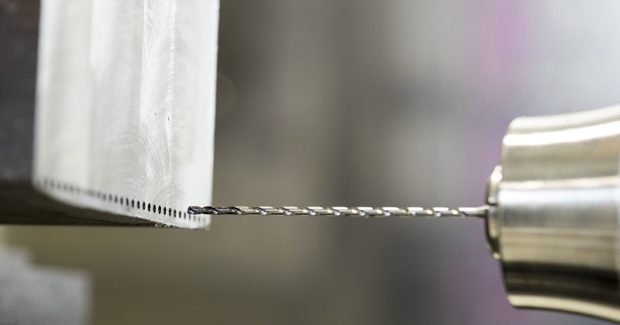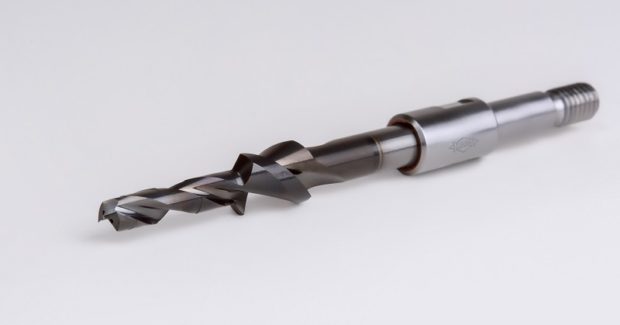Deep Hole Drilling Small Diameters; Dry Combination Drilling of Aluminum
Ideal for drilling automotive fuel injection nozzles or for medical technology, new miniature deep hole drills from MAPAL range in diameters from 1.0 mm to 2.9 mm (shank diameter 3 mm) for universal drilling in steel and cast iron machining, and drilling depths between 20xD and 30xD.
Posted: April 20, 2017
Deep hole drills with very small diameters are needed for various sectors in the automotive industry, such as the drilling of fuel injection nozzles, or for medical technology. In Booth 5844, MAPAL Inc. (Port Huron, MI) extends their portfolio of deep hole drills with internal cooling for machining centers to include models above one millimeter diameter in order to be able to produce these delicate parts. The geometry of these new drills has been specially adapted to the small diameter range. Thanks to the newly designed chip flute and special face geometry, very high feeds and cutting speeds are possible with deep hole drills. Using innovative cooling channels, the drills are also suitable for applications with minimum quantity lubrication (MQL). Despite lengths of up to 30xD, the gas/oil mixture is reliably transported to the cutting edges. Instead of a full coating, the new tools are coated only at the head for higher cost-effectiveness.
These new miniature deep hole drills range in diameters from 1.0 mm to 2.9 mm (shank diameter 3 mm) for universal drilling in steel and cast iron machining, and drilling depths between 20xD and 30xD.
Aircraft manufacturers frequently employ stacks of different aluminum alloys for the aircraft fuselage. During final assembly of the aircraft, drill feed units are used to drill bores for riveted joints in these two aluminum alloys that form the ribs and outer skin of the aircraft. Until now MQL has been used to cool the drilling and countersinking tools, however, the cooling medium then got inside the aircraft where further assembly steps were taking place at the same time. This type of cooling also requires extensive cleaning. As a result, the demand arose for a tool for dry machining of the Al-Al stacks. Not only did dry machining make demands on the tool, but also the varying properties of the two different aluminum alloys. The machining operation must not produce a burr, either at the bore exit or between the two layers.
MAPAL has taken up this challenge and developed a new drill with countersink step in order to be able to drill the bores for the riveted joints dry. This twin cutting-edged carbide tool has an extremely positive cutting edge and a double point angle that minimizes burr formation and achieves better centering. The coating of the drill prevents material adhesion to the cutting edge. A leading stage provides for an optimum bore quality. Specially formed chip flutes ensure optimum chip removal. Air is used for cooling, preventing overheating of both the tool blade and the aluminum and hence burr formation. The compressed air is also used to blow out the chips.
At one aircraft manufacturer the new drill is used for the bores on the longitudinal seam in the rear main span. A spindle speed of 2,959 rpm and a feed rate of 0.154 mm are used here. The drill, with its diameter of 4.748 mm and 100 deg countersink step, reliably produces 1,500 bores before falling outside the demanded tolerance of 4.73 mm to 4.805 mm.
MAPAL Inc., 4032 Dove Road, Port Huron, MI 48060, 810-364-0668, www.mapal.com.

















